In this Article:
In this cartridge comparison, we look at two of the modern day big game hunter’s favorite cartridges, the .300 Win Mag vs .30-06 Springfield. Both of these cartridges offer the hunter tremendous performance in the field, including both ballistic performance and stopping power.
Both of these cartridges are often used in the hunting community and are used for a lot of the same large game. Both of these cartridges also have the ability to be used for long range shooting applications. In this article, we will take a look at the ballistic and other performance specs that are important for a hunter to take into consideration before heading out into the field.
We will take a brief look at where these cartridges come from, the cartridge specs, and then several categories such as bullet ballistics, recoil, and availability. We will do this not to determine which of the two is “the best†as both are known large game killers. We will make these comparisons in the hope that you can make a better decision as to which cartridge is better suited for you under certain hunting scenarios.
A Brief History
.300 Winchester Magnum
The .300 Win Mag, like the .30-06, takes a 30-cal bullet. This specific cartridge came into production by Winchester in 1963, so this, when compared to other popular hunting cartridges, is fairly new. When the .300 Win Mag was introduced to the public, the concept of a magnum round was not new, but the timing of the round, along with the popular rifles that came chambered for it, and its performance in field, all culminated in the .300 WM being on of the most popular and used magnum round to date.
The .300 Win Mag can be packed with large amounts of powder giving it a huge advantage in velocity. The cartridge is also able to be to take a variety of bullet weights. Most weights are within the 150-200 grain range, but there are several lighter and heavier rounds available.
This round is popular for long-range shooters including big game hunters and competitive shooters. There are two sides to the use of this cartridge in long range target shooting though few, if any, would argue that it cannot be effective. The .300 Win Mag has also been used and is still in use by snipers in special forces and military circles, but it is most often discussed and used in the hunting world. Like any hunting cartridge, it’s all about matching the style of ammo with the hunting situation when thinking about its effectiveness.
.30-06 Springfield
The .30-06 (thirty-ought-six) was developed in 1906 in response to advances in cartridge design in foreign nations and provided a round at the high-end limit of power and “controllability”. Its name comes from the bullet diameter (.308) and the year it was produced (1906). The .30-06 Springfield saw combat in several wars until it was replaced in the late 70’s.
Even after the cartridge was retired from military service, the .30-06 still found use in the hunting world. For big game hunters, velocity, power, and flat trajectory gave and still gives them the ability to take down larger game cleanly up to and beyond 500 yards. The .30-06 is not found in competitive long-range shooting circles as it once was, but the numbers still provide evidence that the .30-06 can compete, especially when in the right hands. Perhaps more so when hand-loaded, but we will focus specifically on factory loads in this article.
The .30-06 is widely available in just about any retail store that sells ammunition. It has a huge selection of bullet weights as well as designs that allow the .30-06 to be used in a variety of hunting situations. The .30-06 can also be an extremely hot load when hand loaded, increasing its performance greatly.
Specs
| .300 Win Mag | .30-06 Springfield | |
|---|---|---|
| Parent Casing | .375 H&H Magnum | .30-03 |
| Bullet Diameter | 0.308†| 0.308†|
| Neck Diameter | 0.339†| 0.340†|
| Base Diameter | 0.532†| 0.471†|
| Case Length | 2.62†| 2.494†|
| Overall Length | 3.34†| 3.34†|
| Case Capacity | 93.8gr | 68gr |
| Max Pressure (SAAMI) | 64,000psi | 60,200psi |
Both of these cartridges take a .30 cal bullet. They are very similar in a lot of casing specs including the neck diameter and the case length. With the way the bullets sit in the casing, they both come out to the same overall length in the cartridge. Even with some similar specs, there are some major differences between these two cartridges. The .300 Win Mag is much more voluminous than the .30-06 and can hold a significantly greater amount of powder and can withstand a much greater amount of pressure. Just from that, you can assume that the .300 win mag is going to pack a little bit more of a punch than the .30-06 and we will see how this difference plays a role in affecting the ballistic properties of the cartridges.
To carry out a comparison of two cartridges, we have chosen five different rounds for both the .300 Win Mag and the .30-06 Springfield that provides a broad view of the properties of these cartridges and how they can vary or remain the same from round to round. It is by no means comprehensive, as there are dozens of rounds for each cartridge, but by making careful selections, we have covered the basis. Below is our list of rounds. And we are aware that your favorite round may or may not be present on this list. We also know how protective some of us can be when it comes to our favorite cartridge and rounds. Unfortunately, we are limited in the number of selections we can make due to space and these selections gave us a variety of rounds from each cartridge. So if your go-to round is not on here don’t feel slighted. At the end of the day, all that matters is that you are confident with your selection and it gets the job done.
 .300 Win Mag Federal Vital-Shok Trophy Bonded 180gr
.300 Win Mag Federal Vital-Shok Trophy Bonded 180gr .300 Win Mag Federal MatchKing BTHP Gold Medal 190gr
.300 Win Mag Federal MatchKing BTHP Gold Medal 190gr .300 Win Mag Barnes Precision Match OTM 220gr
.300 Win Mag Barnes Precision Match OTM 220gr .300 Win Mag Nosler Trophy Grade AccuBond Long Range 190gr
.300 Win Mag Nosler Trophy Grade AccuBond Long Range 190gr .300 Win Mag Hornady Superformance SST 180gr
.300 Win Mag Hornady Superformance SST 180gr
 .30-06 Federal Vital-Shok Nosler Partition 165gr
.30-06 Federal Vital-Shok Nosler Partition 165gr .30-06 Hornady GMX Superformance 150gr
.30-06 Hornady GMX Superformance 150gr .30-06 Federal American Eagle Jacketed Hollow Point 150gr
.30-06 Federal American Eagle Jacketed Hollow Point 150gr .30-06 Nosler Custom Hand Loaded AccuBond 200gr
.30-06 Nosler Custom Hand Loaded AccuBond 200gr .30-06 Federal Gold Medal Sierra Matchking 168gr
.30-06 Federal Gold Medal Sierra Matchking 168gr
And for those of you who might be skeptical of a comparison of two cartridges with so few rounds, we have actually compiled many more rounds for each. At the end of each section we look at, we will present the averages for each cartridge which have been calculated using the larger sample of rounds. We can use this to verify the discussion of the smaller sample size and we can also be more confident that what we are seeing accurately depicts the similarities and contrasts between these two cartridges. This sample is still nowhere near a complete list of the available factory loads for these two popular cartridges, but we feel that it is large enough to reflect the full field of rounds.
All of the selected rounds are factory loads and that are widely available. You might come across forums or blogs where someone is showing much higher velocities or other performance specs for these cartridges, and they are certainly out there but are more than likely hand loaded. Factory loads tend to err on the side of caution when it comes to loading the casings with powder. We also want to note that all of the data here is computer generated. The majority of the data is available from the manufacture, and where that was not available, we relied on ballistic calculators from trusted sources. Where ballistic calculators are used we kept as many variables the same between rounds of the same cartridge. Where calculations are made, we will be sure to make clear our variables.
When it comes to this type of data, there is no concern with comparing cartridges, but you should be aware that these numbers can change when being fired from your own rifle. Each rifle tends to have its own small differences in its profile, and this means some small differences to the ballistic output. As far as comparing the two cartridges go, computer-generated data has its advantages in that these small differences are negated.
So, with all of that out of the way, let’s jump into our comparisons.
Recoil
Looking at the recoil of the .300 Win Mag vs .30-06 is important for understanding certain situations that you might favor one over the other. It is probably a bigger factor in selecting between one over the other for younger or inexperienced shooters. It’s still something to think about even if you do have a lot of experience. Recoil can influence shots, especially ones where you might not have much time to prep the shot, and it also influences your ability to make follow up shots.
What we are looking at in this section is not power of impact when you shoot the rifle but the actual force that is generated when the primer ignites the powder and sends the bullet downrange. While this energy does translate to felt recoil, it is actually quantifiable. Felt recoil takes a lot of other factors into account that is difficult to put numbers with.
If we take a look at the averages for recoil energy from these two rounds provided by the ballistics calculator we see that they are both hard hitting cartridges (Graph 1).
While the .300 Win mag has a slightly higher recoil energy of a couple ft.lb, you’re going to feel both of them when firing. With both of them having over 25ft.lb of recoil energy there is the possibility of your shot being altered by flinching slightly through the pull. It’s also important to note here, that while the numbers are pretty close, the .300 WM is actually being simulated with a 9lb rifle while the .30-06 rounds are being fired with a 7lb rifle.
Let’s take a look at our ten rounds we are going to be using throughout this article and see how varied the recoil is when we take into account different rounds (Graph 2).
We calculated these numbers using the provided muzzle velocity, a powder charge that was the average from several respected load data sources, and a rifle weight of 7lbs for the .30-06 rounds and a rifle weight of 9lbs for the .300 Win Mag rounds to simulate real world applications. Like in the previous graph, we still see a general trend towards the .300 Win Mag rounds producing more recoil than the .30-06. Even so, there is some overlap between the two where we see .30-06 rounds have very similar or more recoil energy than the .300 Win Mag rounds. If you take the averages, the .300 Win Mag rounds are going to be just slightly higher, and even a little closer than the previous graph showed. Both are going to produce some kick, though we don’t think this slight difference in recoil is going to be telling between the two rounds. Whatever you go with, it’s going to be something that you will need to become accustomed to.
We should note again that we are using different rifle weights to better simulate real world applications. So though we see some overlap in the recoil, we have to keep in mind that the .300 Win Mag rounds are being fired from a heavier rifle. Below, where we have listed the average recoil data from our enlarged sample size, you will also find the average recoil for the .300 Win Mag rounds when fired from a 7lb rifle.
Average Recoil (ft.lb)
| .30-06 Springfield | .300 Winchester Magnum | |
|---|---|---|
| 7lb Rifle | 7lb Rifle | 9lb Rifle |
| 23.2 | 35.1 | 27.3 |
From these averages, you can see what a difference two pounds can make when it comes to recoil energy. When using the lighter rifle for our calculations, there is no overlap at all between these cartridges and it is clear that the .300 Win Mag rounds are producing a lot more recoil energy. At the same rifle weight, the .300 WM has 12 more ft.lb of force than the .30-06 rounds. With a heavier rifle, the difference is only 4ft.lb. This is a good example of why you should always keep your rifle or potential rifle in mind when discussing cartridges and their performance. They really do influence the performance.
Ballistics
When comparing two cartridges, the ballistics of each is always an important topic. Knowing how the round performs let’s you understand if it will fit the hunting or shooting situation at hand. In this section, we will look at velocity, trajectory, and ballistic coefficients of the .300 Win Mag vs .30-06 to give us the information necessary to draw some conclusions for when each cartridge is best used.
Both of these are .30 caliber rounds and it would be easy to assume that a lot of their ballistic performances are similar. We do have to remember that there are some pretty distinct differences between the two cartridges so it is important to take a close look at as many ballistic categories as we can.
We also think that it is important to note that though we are looking at all of these categories individually and that is only giving you part of the picture. All of these categories including the categories outside of ballistics all go hand in hand and influence each other. We will attempt to bring all of this together when we get to the application section.
Velocity
Velocity has a lot of implications with how the bullet is going to perform in other ballistic categories. While far from the only factor, velocity plays a key role in how the bullet penetrates, how the bullet expands, and how well the bullet can resist certain environmental factors during flight. For long-range shots, higher velocities correlate with better accuracy when paired with the correct barrel twist. So, when thinking about the .300 Win mag vs .30-06, how do the two stack up in this category?
To answer this, we simply went and found the manufacturer’s data on each round. All were tested with a 24″ barrel rifle and we compared the velocities (ft/s) from the muzzle out to 500 yards (Graph 3).
And like we mentioned earlier, these numbers are most likely not going to be what’s coming out of your rifle. By keeping the same variables, we can look at the trends in how velocity compares but this article is not intended to tell you exactly what you will be seeing with any of these rounds in the field.
For our rounds, we see a slight difference in muzzle velocity with the .300 Win Mag. There is overlap between the rounds of the different cartridges, and this trend continues through the entire 500-yard range, but we do see an average higher velocity for the .300 WM over the .30-06. Even with some overlap between the two cartridges, the average difference between the two widens slightly as the rounds move downrange because the .30-06 rounds tend to bleed velocity at a slightly higher rate than the .300 WM rounds. As we mentioned earlier, this increase in velocity helps make the .300 win mag an accurate long range hunting cartridge. The same can be said for the most of the .30-06 rounds that also give you tremendous velocities from the muzzle to 500+ yards.
While there does seem to be a difference between cartridge, both have rounds with muzzle velocities right around 3,000ft/s and all of them over 2,500ft.s. Both cartridges are hot rounds and maintain speeds well over supersonic at 500 yards and several hundred yards beyond. With these velocities, there should be no issue with terminal ballistics if you have hunting in mind.
Below, you will find the velocity averages for these two cartridges at the same yard markers. We have also provided the average yard for these rounds falling beneath supersonic flight.
Average Velocity (ft/s)
| Yards | .30-06 Sprg | .300 WM |
|---|---|---|
| Muzzle | 2822 | 2976.4 |
| 100 | 2601 | 2773.3 |
| 200 | 2391 | 2590 |
| 300 | 2191.9 | 2390 |
| 400 | 2001 | 2236.4 |
| 500 | 1828 | 2055.8 |
With the extended data set, we see a lot of the same trends between these two cartridges in velocity. We still see the increase in velocity for the .300 Win Mag. And while the hottest rounds are from the .300 WM, there are .30-06 rounds that perform at or above the .300 WM average. We also see that the .30-06 does bleed velocity a little more quickly than the .300 Win Mag when looking at the averages from the muzzle and from 500 yards where the difference increases from 154 to 227 fps.
We are looking at two cartridges that have the ability for long range shooting so we wanted to take a look at the average distance these cartridges can remain in supersonic flight. The reason this metric is important for extreme distance shooting is because bullets in supersonic flight tend to be more stable. When bullets fall below this threshold, they are more susceptible to environmental factors that can influence the flightpath. Obviously, this would make calculations for shot placement much more difficult. So, when choosing a factory load or when handloading your own cartridge, how long the bullet will remain supersonic is an important piece of information.
We have listed the average distance that these rounds remain supersonic for our larger data set in the table below.
Average Supersonic Limit (Yards)
| .30-06 Springfield | .300 Winchester Magnum |
|---|---|
| 1050 | 1258.75 |
With these rounds, the .300 Win Mag, on average, is able to remain at supersonic speeds a little over 200 yards further than the .30-06 cartridge. Obviously, these are averages and when looking at individual rounds, there is quite a bit of deviation between rounds of the same cartridge. The .300 Win Mag has quite a few rounds that are breaking the sound barrier at over 1400 to even 1500 yards but there are .30-06 rounds that can remain supersonic to 1100 and 1200 yards. Still, there is a big enough difference here to take note for later discussion.
Ballistic Coefficient (BC)
The ballistic coefficient is a number that if you spend any time searching and researching different rounds will pop up. There is quite a bit of complexity to the BC and different variations with different interpretations. For the sake of clarity and simplification, we will discuss it in terms that the firearm manufacturers use to describe their ammo’s flight characteristics.
In the simplest of terms, the BC is just a number that is derived from an equation that uses multiple cartridge/bullet variables. What this number tells you is how well the bullet resists wind drag and wind drift throughout its flight path. High BCs for hunting cartridges fall in the 0.4+ range which is what we will find most of our rounds discussed in this comparison (Graph 4).
If a round comes with a high BC, we can assume that it’s going to be a more accurate round, and by accurate we mean it holds to its flight path better than a round with a low BC.
The ballistic coefficient is probably going to carry a little more weight for those practicing long range shooting. It’s not that a hunter shouldn’t consider the BC, but for a shot at 300 yards, we are not sure that the differences we see in the BC between these two cartridges will really make any noticeable difference. Maybe if you’re hunting in gale force winds, which we know some hunters who would. For most of us that focus mostly on hunting and usually keep our shots within 400 yards, we will probably give more consideration to other performance specs.
If we look at our ten rounds, we see that the BC can vary from round to round for each cartridge. Generally, you will see a slightly higher BC for .300 Win Mag rounds, but that doesn’t mean there are not .30-06 rounds with 0.5+ BCs. We do see an instance here where a .30-06 round does indeed have a .5 BC. On the other hand, we have four .300 WIN Mag rounds that break the .5 mark and two of which break the .6 mark. Both cartridges, for the most part, show high BC’s which we would expect for rounds that are capable of long distance shots.
And it is important to remember that though we see there is a slight advantage to BCs for the .300 Win Mag, bullet style plays a large role, and there could be some selection bias here given the number of samples we have. We still feel confident with these results because a lot of the same bullet styles are present in our sample. Higher weights also help the BC as heavier bullets take a little more resistance to get pulled off their path and are one of the main factors for the .300 Win Mag has a slight advantage. The 200gr .30-06 round that we looked at has a BC that is more similar to the .300 Win Mag rounds.
All that being said, and as we stated earlier, if you want a round with a high BC there are options available to you in both a .300 Win Mag and a .30-06 Springfield cartridge.
Let’s take a look at the average BCs for the extended set of rounds and see if our earlier observations are supported.
Average Ballistic Coefficient
| .30-06 Springfield | .300 Winchester Magnum |
|---|---|
| 0.427 | 0.489 |
We still see that the .300 Win Mag has a higher average BC than the .30-06 Springfield but like the previous set of rounds, we also see that there is quite a bit of a range in the BC of rounds for each cartridge (not shown). The average definitely lets us know that there are more options for higher BC rounds with the .300 Win Mag and the top rounds in this category are of the .300 Win Mag cartridge. Like we mentioned previously, there are still .30-06 rounds in the mix with 0.5+ ballistic coefficients.
Trajectory
The bullet’s trajectory is another important ballistic characteristic to consider. If you know your rounds flight path, it makes adjusting for shots in the field much more accurate. Of course, good optics can help as well. In this section, we will look at both the short (sighted at 100 yards) and long (sighted at 200 yards) range of the ten rounds. Before we do so, we wanted to present two rounds that are very similar to each other including the maker, bullet design, bullet weight, and ballistic coefficient. By keeping as many of these variables similar to each other, we hope to have a clear picture of both rounds flight path (Graph 5).
By comparing two very similar rounds, you can get a better idea of the flatness of the trajectory than when we will when comparing rounds that vary a lot more.
Both are Federal Nosler Partition 180gr rounds, and from the graph, you can see that there is not much difference, even negligible up to 400 yards. At the 400 yard mark, the difference is only a few inches. Past that mark, the difference becomes more distinct with the .300 Win Mag showing a less pronounced drop. We will get to this more in our applications, but for the most part, these two cartridges show a flat trajectory that makes long range shots much more achievable.
Short Range Trajectory
While both the .300 Win Mag and .30-06 cartridges are well known for their ability to take large game at long distances, any and every hunter knows that short-range shots often present themselves in the field. For that reason, we wanted to look at the trajectories of both cartridges using our ten chosen rounds (Graph 6).
We are measuring bullet drop in inches out to a range of 300 yards with the rifles zeroed at 100 yards.
From this comparison, we see an advantage to the .300 Win Mag in trajectory at short range though we do see some .30-06 rounds that show similar or flatter trajectory than a couple of the .300 Win Mag rounds. At the 200-yard mark, the difference between the two cartridge rounds is negligible. For the most part, both cartridges show a manageable bullet drop throughout the 300 yards, but there is distinctively less for the .300 Win Mag at 300 yards. Even at the 300-yard mark, the 220gr .300 Win Mag shows similar bullet drop as a much lighter .30-06 round. While at the most it is only 10†of difference between the flattest .300 Win Mag and the steepest dropping .30-06 round, 10†when trying to place at killing shot at that range is significant for a lot of shooters. And besides those two rounds, the remaining eight rounds all fall within five inches of each other, and the average difference between the two cartridges is only 3 inches.
Let’s take a look at the short-range averages of these two cartridges after increasing the number of rounds. We have also brought the range out to 400 yards.
Average Bullet Drop (Inches) at Short Range
| Yards | .30-06 Sprg | .300 WM |
|---|---|---|
| 50 | -0.155 | -0.193 |
| 100 | 0 | 0 |
| 200 | -3.71 | -2.9 |
| 300 | -13.67 | -11 |
| 400 | -31 | -25.6 |
Based on these numbers, we are still seeing a slight advantage for the .300 Win Mag out through 300 yards. At 400 yards, the difference grows to a little over five inches. Like the smaller data set, we do see rounds of both cartridges that have very similar performances in this category, which makes sense given how close the averages are. If you were only concerned with trajectory, the top performing rounds in this category are .300 Win Mag rounds. In this data set, there are several .300 Win Mag rounds that have less than 24 inches of bullet drop while only one .30-06 cartridge hits this mark.
Long-Range Trajectory
Now, for some hunters and especially competition or just range shooters, choosing between these two cartridges, the long-range trajectory is going to be the section they are most interested in seeing rather than the short range. We are comparing the same rounds with the same units out to a range of 500 yards with the rifle sighted in at 200 yards (Graph 7).
If you are interested in the numbers past this range, we have provided the numbers for 700 and 1,000 yard markers in the table at the end of the section.
Both of these rounds have excellent long-range properties, especially if we were to compare them to several other hunting rounds. For these ten rounds, and it would hold true if we were to expand to others, the .300 win mag seems to have less drop in trajectory going out to 400+ yards, and this difference would be magnified if we took the graph out even further. Still, even at the 400 and 500-yard mark, there are .30-06 rounds that show trajectories similar to the .300 WM rounds. We do see the rounds from each cartridge begin to group at the 400-yard mark, but the averages between the two only have a difference of 2 inches.
There really is not a significant difference in bullet drop between the two cartridges until you get to the 500-yard range. At this point, the .300 WM rounds show an average bullet drop of 38 inches while the .30-06 rounds have an average bullet drop of 48 inches. And like we mentioned earlier, 10 inches at five hundred yards is pretty significant for most casual hunters and shooters even with today’s rifle optics. There can be a lot larger differences between these two cartridges depending on the round you are working with. If you look at the flattest .300 Win Mag round and the steepest dropping .30-06 round, there are nearly 17 inches of difference between the two in favor of the .300 win mag round. So while there is a trend for the .300 Win Mag having a flatter trajectory at long ranges, you can find a flat shooting round for either of these cartridges.
Let’s take a look at the averages for these two cartridges with more rounds added to the mix. We can also take a look at how the two compare when we get into more extreme distances.
Average Bullet Drop (Inches) at Long Range
| Yards | .30-06 Sprg | .300 WM |
|---|---|---|
| 100 | 1.8 | 1.5 |
| 200 | 0 | 0 |
| 300 | -8 | -6.7 |
| 400 | -23.6 | -19.5 |
| 500 | -48.3 | -39.5 |
| 700 | -133.4 | -104 |
| 1000 | -397.7 | -295.6 |
At each yard marker, we again see the .300 Win Mag showing flatter trajectory than the .30-06. Out to 400 yards, the difference is not too dramatic though four inches is more than enough to change someone’s mind. It is past this range where we see the gap begin to widen between these two cartridges. Like the previous set of rounds we looked at, there is right around ten inches of difference between the two cartridges. At the 700 yard marker, the .30-06 rounds fall, on average, nearly 30 more inches than the .300 Win Mag.
At 1,000 yards, there is not really any question that the .300 Win Mag factory loads have the advantage with a little over 100 inches less bullet drop than the .30-06 rounds.
Now, there are some .30-06 rounds that have pretty dang good numbers for factory loads, but we can’t deny that, from these numbers, there is a definite advantage for the .300 WIN Mag rounds when it comes to flat shooting bullets. And we know there are a lot of there thinking that the .30-06 can do much better than this and we agree. But for this particular comparison, we are only talking factory loads.
While having a flat trajectory out to these distances are important, for hunting purposes they don’t matter unless they carry the stopping power along with them and this is the topic of discussion in our next section.
Stopping Power
When hunters think about how a certain bullet is going to react when hitting the target, they think stopping power or often referred to as knockdown power. While the hunters are going to be very interested in this section, those looking for a long-range competition cartridge are not going to be as invested in this section. Still, it’s never a bad thing to now as much as you can about a cartridge you plan on chambering. There are several components to take into account. One of those components is the wound type and size. A lot of this has to do with the design of the bullet, and because that branches out from simple cartridge comparison, we will leave that for another article though don’t let our omission lead you to believe we do not think it is a critical component. We certainly do and wish we had more time to get into that side of the equation. And we also believe that we can talk numbers all day, but if you can’t place the bullet where it needs to go, the numbers don’t really mean anything.
The components we want to focus on are the kinetic energy that is carried by the bullet and transferred to the game on impact and the penetration the bullet will have on target. To look at the potential penetration of these cartridges, we will go about it with two different methods including the sectional density of the various rounds and the momentum of the bullets.
This transfer of huge amounts of energy is extremely damaging to the internal organs and is a major factor in making a clean kill. Penetration is important for reaching vital organs, especially for larger game with thick skin, tissue, and bones. Both of these factors are easily represented by numbers and makes comparisons between the .300 Win Mag vs .30-06 measurable rather than qualitative.
While we strongly believe that each of these metrics can provide us with different but invaluable information on how they influence a round’s stopping power, we don’t think that any single metric is going to tell you if the round can take down game effectively. Heck, you can’t be a hundred percent for sure with all of these metrics. You still have a lot of factors involved that we stated briefly and we even have to think about the game you’re hunting. Still, we can gain a lot of insight into how these two cartridges compare from these numbers and though they don’t tell the whole story, they tell an important part.
Energy
We will measure the force (ft.lb) carried by each of our eight rounds from the muzzle to 500 yards. As a general rule, you want at a minimum of 1,000 ft.lb force when trying to take down larger game, and probably more than that when talking about bear, elk, and moose which these cartridges are often used for. We do think that the amount of energy a bullet is carrying is important to know and understand when using these rounds for hunting purposes, but we also know that those guidelines are arbitrary. Shot placement is equally if not more important than the amount of energy that the bullet is carrying.
So, let’s take a look at the bullet kinetic energy of these rounds and see if there are any noticeable trends (Graph 8).
Right out of the muzzle we see a noticeable difference between the two cartridges. The .300 Win Mag rounds all show a higher bullet energy than all of the .30-06, and it is a considerable difference between the averages. The .300 WM rounds have an average of 3,640ft.lb of energy while the .30-06 rounds have an average energy of 2,839ft.lb.
As rounds from the muzzle to 500 yards, the distinction between the two cartridges is still noticeable just from looking at the graph. Though all of the .300 WM rounds still carry more energy at the 500-yard mark, the gap between the averages of the two cartridges closes to 650ft.lbs of energy rather than 800ft.lbs of difference when leaving the muzzle. This decrease in the difference between the two is mainly from several .30-06 rounds that tended to bleed off energy at a lower rate than some of the .300 WM rounds.
Both the .30-06 and the .300 WM carry a tremendous amount of energy downrange with them. All ten of the rounds that we examined maintained greater than 1,000ft.lbs of energy at the 500-yard mark. All of the .300 WM rounds were at 1,700ft.lb or greater at the 500-yard mark. This information will be important in our discussion for applications of the .300 WM vs .30-06.
There are some interesting trends between these two cartridges that have big implications in the applications of these cartridges when it comes to the kinetic energy. Let’s take a look and see if those trends persist when we factor in more rounds for each.
Average Bullet Kinetic Energy (ft.lbs)
| Yards | .30-06 Sprg | .300 WM |
|---|---|---|
| 0 | 2922.9 | 3479 |
| 100 | 2484 | 3029 |
| 200 | 2102 | 2658.4 |
| 300 | 1770.8 | 2290 |
| 400 | 1485.4 | 1988.3 |
| 500 | 1241.8 | 1741.3 |
With the larger set of rounds the .300 Win Mag still holds the advantage in kinetic energy associated with bullets heading downrange and it is by a significant margin. At any point from the muzzle to 500 yards, you are looking at 500+ more ft.lbs of kinetic energy associated with the .300 Win Mag.
What’s really interesting, and the reason we want to look at the numbers with more rounds, is that we don’t see the same loss in KE that we saw earlier. With more rounds, we see that the difference between the two cartridges remains pretty much constant from the muzzle out to 500 yards. It also hints that the two .30-06 rounds we saw that conserved KE at a high rate were more of outliers compared to most rounds. And that is another good example of while cartridge to cartridge comparisons are great for a lot of things, you should always look at a couple individual rounds from each before making a final decision.
In any case, both cartridges are still bringing more than 1200ft.lb of energy at the limits of what most consider ethical shots.
Penetration (Sectional Density)
For a bullet to be effective in bringing down game efficiently, it has to be able to penetrate the animal and damage vital organs such as the heart and lungs. For smaller game, you don’t need as much penetration while a lot is needed for large game such as mule deer, elk, moose, and bear where there is much thicker hide and bone to get through.
To compare the penetration potential in this article, we will compare the sectional densities of the four rounds for each cartridge. The sectional density is derived from a calculation that is the bullet’s weight divided by its diameter and then squared. In theory, the higher the sectional density, the greater the penetration of the bullet as more force is applied to a smaller area of the target. Of course, other factors such as velocity and bullet design also come into play when talking about penetration, but we’ll keep the focus on SD and bullet momentum which is the topic of our next section.
One of the more popular methods for measuring penetration is through the use of ballistic gels. While that method provides useful information, we are not sure how well that represents the hide of a bull moose. It is also a better method for looking at individual rounds. We would like to step back and look at how the two cartridges compare, and the sectional density correlates to penetration and lets us compare the two cartridges as a whole.
So, let’s take a look at the sectional densities of our ten selected rounds (Graph 9).
Both of these cartridges are .308†in diameter so differences in their sectional densities will come from the bullet weight. We see that on average, the .300 Win Mag rounds have slightly higher SDs and this is because of some of the heavier bullets that can be used. We briefly touched on this earlier, but this increase in mass for the .300 Win Mag rounds are what gives it the slight advantage, at least with these selected rounds.
In theory, this would mean these .300 Win Mag rounds with higher SDs should penetrate deeper than the .30-06 rounds with lower SDs. Of course, more is at play here. To have an even deeper understanding, you need to understand the force that is behind the rounds. Force is determined by the mass and the acceleration of the object. While we didn’t go through and calculate this metric, we know these rounds were fired from the same length “test barrel†and we know the muzzle velocities and we know the mass. Because of this, we have a good idea that there is more force being generated, on average by the .300 Win Mag. This increased force with a higher SD means more force applied to a smaller area. Smaller areas mean less resistance and the bullet should drive deeper. And again, that is without considering how the bullet reacts on impact.
When we factor in the velocity, we see that both of these cartridges provide a tremendous potential for deep penetration with the heavier .300 Win Mag gaining even more of an advantage due to their increased velocity.
Before we look at momentum, another metric that can provide us information for penetration, let’s take a look at the average sectional density numbers from our expanded round list.
Average Sectional Density
| .30-06 Springfield | .300 Winchester Magnum |
|---|---|
| 0.26 | 0.284 |
From this data, we are still seeing the same general trend of the .300 Win Mag having slightly higher sectional densities. There is definitely a lot of overlap between rounds of both cartridges though and that is because there is overlap in bullet weights. There are several 180+ grain .30-06 rounds, though a higher percentage of them fall below this weight. There are also several .300 Win Mag rounds below the 180gr mark, though there is a higher percentage of them in the 180+ grain weight range.
Penetration (Momentum)
The second way we will try to compare the potential penetration for the .300 Win Mag vs .30-06 argument is to look at bullet momentum.
Momentum is the ability of an object in motion to stay in motion. For stopping power, this relates to how well a round will continue to move after encountering resistance such as bone or thick hide.
Now, we can use these numbers to compare the penetration potential of these two cartridges, but what we cannot do is give you a definitive answer to how deep a round will penetrate. As you can imagine, bullet style as well as what the bullet is encountering on impact would have dramatic impact on this and something we can’t account for with computer generated data.
We have calculated the momentum data of the ten selected rounds and graphed them from the muzzle out to 500 yards (Graph 10).
When we look at the graph, we do see that all of the .300 Win Mag rounds carry more momentum from the muzzle out to the 500-yard marker with no overlap between the rounds of each cartridge. You can also see that the rounds are not grouped right on top of each other for either cartridge and they range quite a bit in their values though the .300 Win Mag rounds do have several rounds that behave very similar.
At the muzzle, the .300 Win rounds show an average momentum of 80lb/ft.s while the .30-06 rounds had an average of 65lb/ft.s. Again, there is some deviation with the .30-06 rounds, but even the highest performing .30-06 round falls below the lowest performing .300 Win Mag round and is nearly 20lb/ft.s less than the top performing .300 WM round.
The difference between these cartridges remains stable as they move downrange as we see an average of 58.3lb/ft.s for the .300 WM rounds at 500 yards and an average of 43.7lb/ft.s for the .30-06 rounds as this range. This is a pretty significant gap between the two cartridges and is definitely something that we should check with more rounds that encompass more of the potential bullet weights available for each cartridge.
Momentum is generated by the mass of the bullet as well as its velocity. With what we know of these two cartridges, it makes sense that we see this difference in momentum. In the context of these two cartridges, the .30-06 does seem to be generate low momentum, but in the grand scheme of modern centerfire cartridges, the .30-06 produces a generous amount of momentum that would seem high when compared to other cartridges.
Before we move to the applications of these two cartridges, let’s take a quick look at the momentum numbers generated from our expanded data set.
Average Bullet Momentum (lb/ft.s)
| Yards | .30-06 Sprg | .300 WM |
|---|---|---|
| Muzzle | 66.7 | 75.4 |
| 100 | 61.4 | 70.7 |
| 200 | 56.4 | 64.9 |
| 300 | 51.7 | 61 |
| 400 | 47.2 | 57.2 |
| 500 | 43.1 | 52.6 |
With this data, we still see that the .300 WM has higher bullet momentum, on average, than the .30-06. However, the difference between the two cartridges has closed by quite a margin when we utilize a larger data set, at least at the muzzle. From the muzzle, the difference in the average bullet momentum is only 8.7lbs/ft.s rather than 15lbs/ft.s that we saw of the graphed rounds. As the rounds move downrange, we see the difference fluctuate between 8 and 9lbs/ft.s but both cartridges seem to conserve momentum at the same rate.
While the .300 Win Mag still has the edge in bullet momentum, it is not quite as dramatic as the smaller data set showed and is the reason why we like to double check the numbers with a larger data set. In the end, both of these centerfire cartridges carry a significant amount of momentum downrange.
Accuracy
Accuracy is tough to nail down unless you have all the rounds out at the range at the same time with an experienced marksman. Still, we can use the data we have and generate a pretty good idea of how well each cartridge would perform regarding accuracy.
Both are pretty heavy handed when it comes to recoil. Without practice or with the adrenaline pumping, the recoil could easily throw off a shot with both cartridges. The .300 win mag does have a slightly higher amount of recoil energy, but we don’t know if it is significant enough to make it less accurate. It depends on who is handling the firearm.
Up to 300 yards, both of these cartridges have the capacity for extremely tight groupings. We have seen their flat trajectory in previous graphs and it all points towards both being highly accurate rounds at this distance.
When we get out to further distances, 300+ yards, both cartridges still perform well, but we do see a less pronounced drop in trajectory for the .300 win mag rounds. Both cartridges also have relatively high BCs, again with the .300 Win Mag rounds being slightly higher. Just going in general terms of the .300 Win Mag vs .30-06 discussion, the .300 Win Mag has the edge over the .30-06 for long-term accuracy just going from the data we have looked at so far.
As we have stated before, we don’t think the data alone means that you are going to be more accurate just by choosing one cartridge over the other. The experience and instincts of the shooter are the biggest factor for accuracy in our minds. With that, the ballistic performance of the .300 Win Mag should make adjustments for a shot at long range a bit simpler. And even then, there were .30-06 rounds that showed ballistic properties similar to the .300 Win Mag so round selection, along with cartridge type, is also an important factor.
Price and Availability
Listed below are the ten rounds that we used in our comparison as well as associated price. We should note that some of these particular rounds are on the high end of the price range and this particular selection of rounds might not be the best representation of prices for these cartridges. These prices are also subject to change based on availability of the cartridges and the demand for them.
| Ammunition | Price (20 Rounds) |
|---|---|
| .300 Win Mag Federal Vital-Shok Trophy Bonded 180gr | $46.99 |
| 300 Win Mag Federal MatchKing BTHP Gold Medal 190gr | $52.99 |
| .300 Win Mag Nosler Trophy Grade AccuBond Long Range 190gr | $49.99 |
| .300 Win Mag Barnes Precision Match OTM 220gr | $40.00 |
| .300 Win Mag Hornady Superformance SST 180gr | $32.69 |
| .30-06 Federal Vital-Shock Nosler Partition 165gr | $39.99 |
| .30-06 Hornady 150gr GMX Superformance | $54.07 |
| .30-06 Federal American Eagle Jacketed Hollow Point 150gr | $25.79 |
| .30-06 Nosler Custom Hand Loaded AccuBond 200gr | $65.90 |
| .30-06 Federal Gold Medal Sierra Matchking 168gr | $37.99 |
The .30-06 is the cheaper ammunition and is widely available, and if you like to reload, the components for .30-06 rounds is also cheaper. While the ten rounds we picked have a few of the high end .30-06 rounds, there are a lot of cheaper options out there.
For availability, again, both of these rounds can be found in most, if not all major retail stores that sell ammunition. Both have plenty of round choices out there as well and are pretty easy to find. The .30-06 is likely to be more available in your area as it is more widely used than the .300 Win Mag, but as far as ammo available, you should be able to find both.
Special Offer: Join our private community and get exclusive gun deals, handpicked gear recommendations and updates on law changes, every day!
Join our private community
Applications
Before we wrap up this article, we want to bring in all of the information and numbers that we have looked at so far and use that to get an idea of what situations one of these cartridges or more likely both, are going to be well suited. And so you are not scrolling up and down, we have listed all of the average tables at the end of this section.
From a hunting standpoint, we will begin by saying both of these cartridges are perfectly suited for medium to large game ranging from deer to moose and everything in between.
As far as stopping power goes, both the .300 Win Mag and the .30-06 Springfield have the numbers that back up their use for these applications. They both have a wide selection of rounds that let you match your ammo well with the game you are hunting and is one of the reasons we think the .300 Win Mag is fine for medium sized game given they have some lighter loads available.
The kinetic energy associated with the rounds we examined in this article are more than enough to take just about any game animal in North America without an issue, especially when taken within 500 yards. For the larger game, some might feel more comfortable with the .300 Win Mag, especially when getting into more exotic game outside of North America. This is especially true if you are worried about carrying enough energy out past the 300-yard mark for larger game.
The velocity and sectional densities paired with bullets that will hold together will also provide enough penetration to reach vital organs of these large animals from long range. The bullet momentum and sectional density results also give the .300 Win Mag an advantage when it comes to potential penetration of the target. And like we just mentioned, bullet style will be a big factor and the type you need can be found with both cartridges. Though the .300 Win Mag had the edge in these categories, it again depends on what you are hunting. For the majority of game, the .30-06 is more than capable of giving clean through shots. If you have not been around the sport long, it’s easy to look at these two cartridges when compared to each other and think the .30-06 might not be as effective and that is simply not the case in most situations. There is a reason the .30-06 Springfield is as popular and has been around for so long.
There are plenty of people who might think the .300 Win Mag is a bit much for a lot of hunting situations. It’s not that there is too much stopping power, but the consequences of generating that kind of numbers. Some might say the recoil doesn’t affect them but it will for a lot of people. There are heavier rifles out there to reduce this number, but I know that I don’t want to haul a ten-pound rifle over a couple miles in mountainous terrain. To each their own.
The .300 Win Mag does have a more effective range in our opinion, but for ethical shots taken in the field, the .30-06 is more than effective and has been proven thousands of time. If you have to take shots at and around the 500 yard mark, the .300 win mag is the better choice. While both cartridges have rounds that carry enough energy to take an animal cleanly at these ranges, the increased velocity and flatter trajectory gives it a more effective range and makes shot adjustments much less pronounced than with the .30-06. And that’s just the numbers. Realistically, if we were handed a rifle chambered for the .30-06 Springfield, there really isn’t a hunting situation that we have been in where we would be uncomfortable from a trajectory standpoint.
Again, just from our rounds used for comparisons, there are .30-06 rounds out there that have very similar ballistic profiles as the .300 Win Mag, but overall, the Win Mag is much better suited for extreme distance shots.
Both of these cartridges can be used in settings besides long, open field shots. The heavier bullet options make them great brush guns when hunting in much more dense areas where small branches or light brush usually stand between you and your shot. With the high velocity and stopping power, shots in heavy traffic at 100 yards or less should still stay on path and carry enough energy to take down larger game.
Both cartridges might take some practice and getting comfortable with the amount of recoil, but it’s nothing that should dissuade you from using either cartridge. Neither of these is great introductions to large game hunting for our future hunters to cut their teeth.
As for use on the range, we have already covered the ballistic characteristics. While both can hit targets at 500 yards and beyond, the trajectory and the higher ballistic characteristics might make the .300 Win Mag a more suitable cartridge. This includes some very high ballistic coefficients for the .300 Win Mag. The .30-06 has some options with high BCs but not near as many as the .300 WM. Another distinct difference that we saw between these cartridges was how long they can remain in supersonic flight. The .300 Win Mag, on average, had around 200 more yards of supersonic flight. When you’re getting out to hitting targets at 1,000+ yards, this ability for the .300 Win Mag to stay supersonic can really help with calculating shot placement. There were several .30-06 factory loads that can get up to around the .300 Win Mag average, but overall, you have a lot more options with the .300 WM if you are looking for 1200+ yards of supersonic flight for factory loads.
The difference in recoil between the two cartridges is not enough in our eyes to lean towards one over the other to reduce fatigue at the end of the day. And we say this with the assumption that serious long-range shooters are bringing heavier rifles to the range and also tools to help reduce recoil rather than lighter rifles that are often found for hunting applications. If you’re shooting with a 7lb .300 WM then yeah, it is going to be much much more fatiguing.
The price tag for a box of either of these cartridges is different enough to bring up. For a casual range shooter just competing with their friends, the cheaper .30-06 rounds might be something you consider. For legit competitions, you might not mind the extra money for the improved ballistics of .300 WM factory loads or for the materials to hand load.
Best Rounds
Before we wrap up this article, we want to look back at the ten rounds we have examined and pick out a couple that we think will shine in both hunting and range shooting situations.
Top Hunting Rounds
The .300 Win Mag Nosler Trophy Grade AccuBond Long Range 190gr round stands out to use from a hunting perspective. For large and even dangerous game this is an excellent round. The Accubond bullet design gives you deep penetration on large game with controlled expansion to provide a lot of damage. Even at 500 yards this round still carries 2,016ft.lbs of energy, so range and stopping power is not an issue even for larger game. It has an incredibly flat trajectory out to 300 yards and is even manageable at the 400-yard range when the adrenaline is pumping with a ballistic coefficient of 0.64. For a large game hunting round, this one has all the characteristics you look for.
For the .30-06 Springfield, we like the Federal Vital-Shock Nosler Partition 165gr. We like the 165 grain bullet that provides excellent expansion and maximal energy transfer on impact. It has excellent velocity with well over 2,000ft.s of velocity out to 400 yards. With the velocity to cause proper terminal ballistics, it also has a tremendous amount of energy with over 2,000ft.lb of energy at 200 yards and 1,200ft.lb at 500 yards. This is more than enough for large game at extended ranges. This round also has the second best long-range trajectory with a bullet drop of 23 inches at 400 yards and 46 inches at 500 yards. Both are manageable shots if you have practiced with the round and rifle at those ranges. And anything within 300 yards is nothing for this round in trajectory or available energy.
Top Range Rounds
For the .300 Win Mag, the Hornady Superformance SST 180gr stands out to us as an excellent round to bring to the range. This round offers a decent ballistic coefficient though not as high as some of the others, but it is also one of the least expensive .300 WM we have examined. Even so, it offers the highest velocities and the flattest trajectory than any other round with less than 100 inches of bullet drop at 700 yards which is very impressive for a factory load.
For a .30-06 round to carry to the range with you, we recommend the 168gr Federal Gold Medal Sierra Matchking. For a box of .30-06 rounds, it is relatively inexpensive for the performance. We like the .463 ballistic coefficient, and it offers decent trajectory with less than 50 inches of bullet drop at 500 yards. While that seems like a lot, it’s pretty good for a factory load and you have plenty of time to sit and make the adjustments. The recoil is also manageable compared to the other rounds we have looked at in this comparison. Is it a round you would bring to a legit competition? Most likely not, but it’s still a great option for sending some lead downrange.
Conclusion
When looking at the .300 Win Mag vs .30-06 data, we think it is safe to conclude that both of these cartridges can be used on large game effectively. Both are available and have a range of options to match the specific type of hunting you have in mind. Both have factory ammunition that provides excellent velocity, trajectory, and stopping power to take a wide variety of game.
While there are differences between the two cartridges, as we covered, the more important aspect of picking an effective hunting or shooting cartridge is not what the chambering of your firearm is, but the correct bullet weight and design for the situation especially, when trying to pick between the .300 Win Mag and .30-06 Springfield.

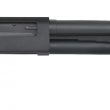
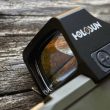


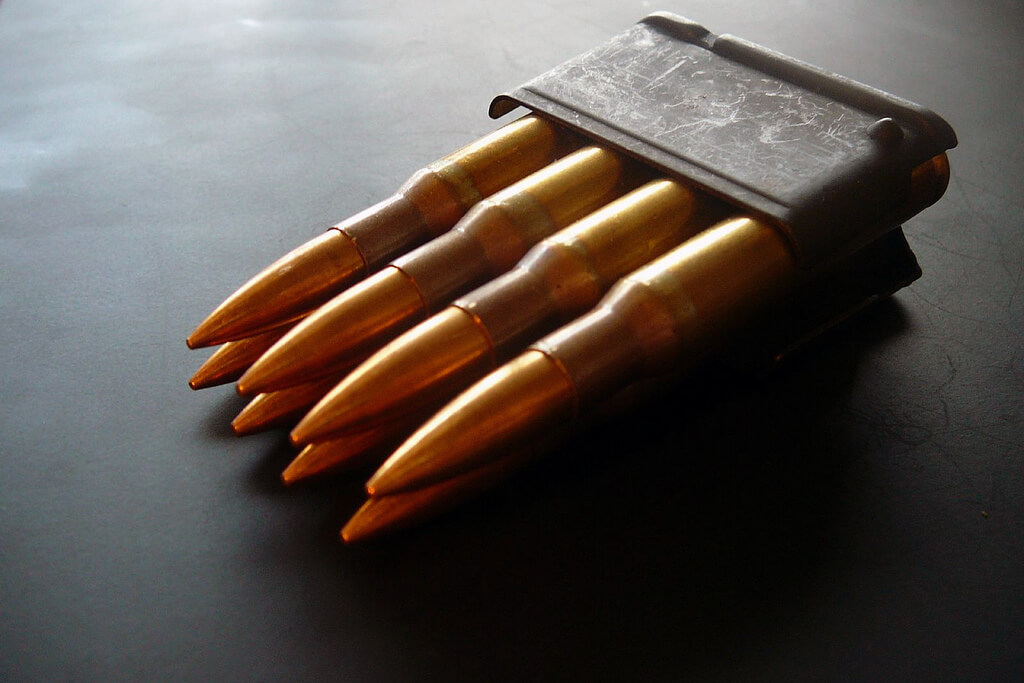
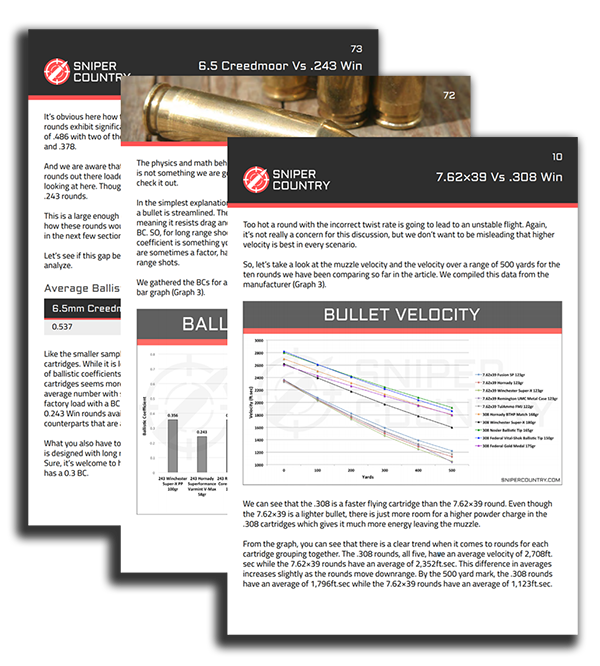

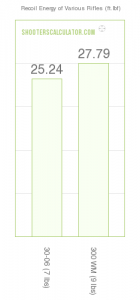
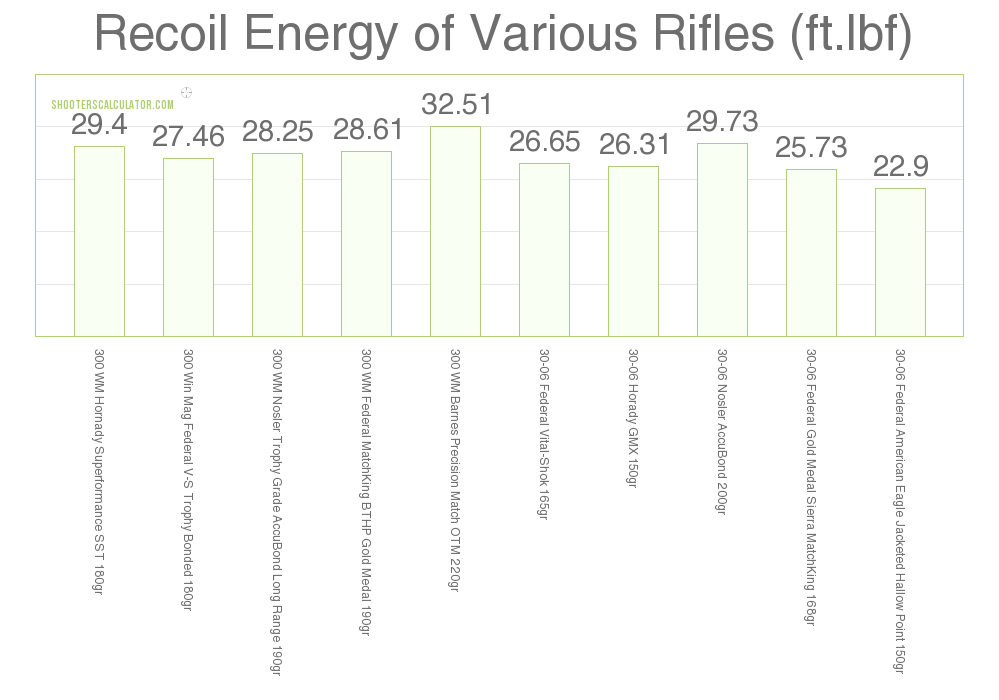

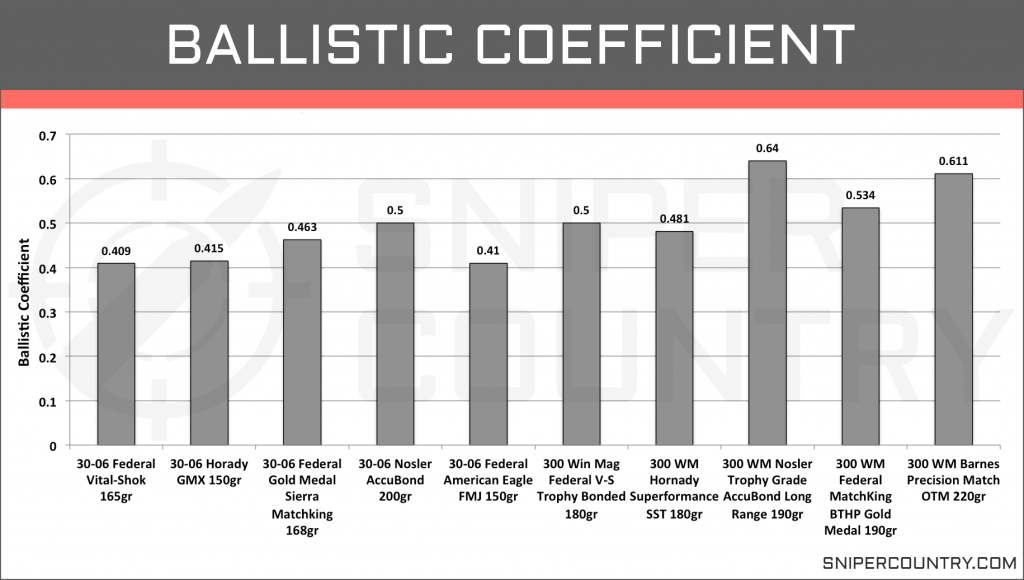

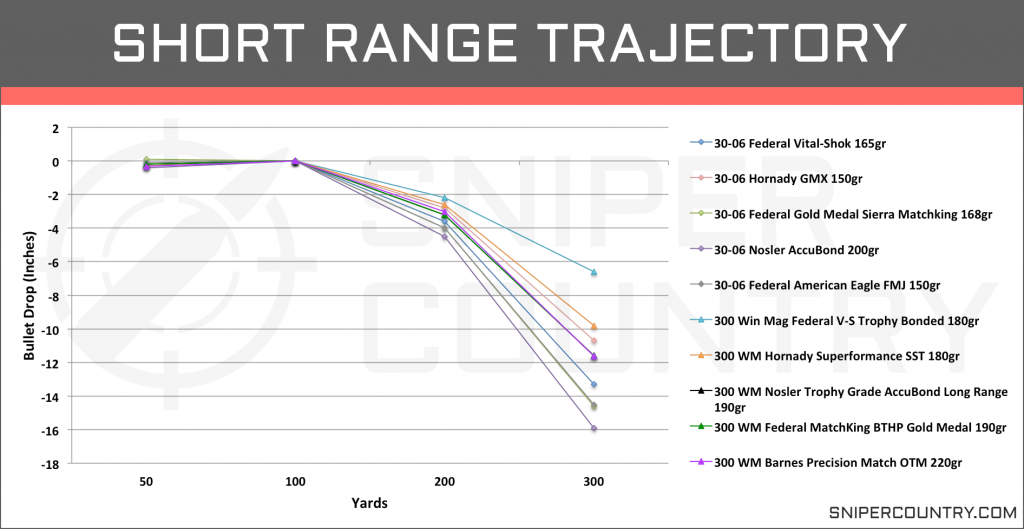

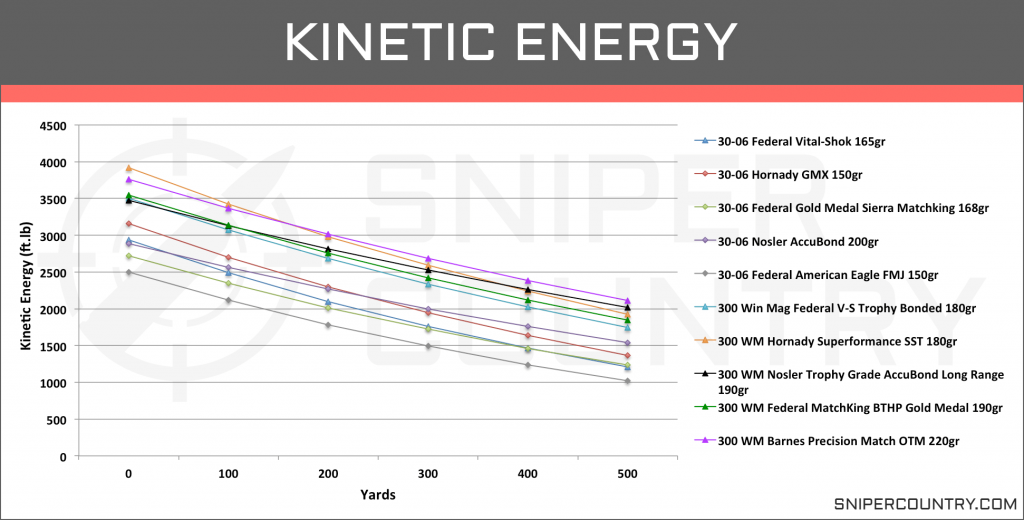
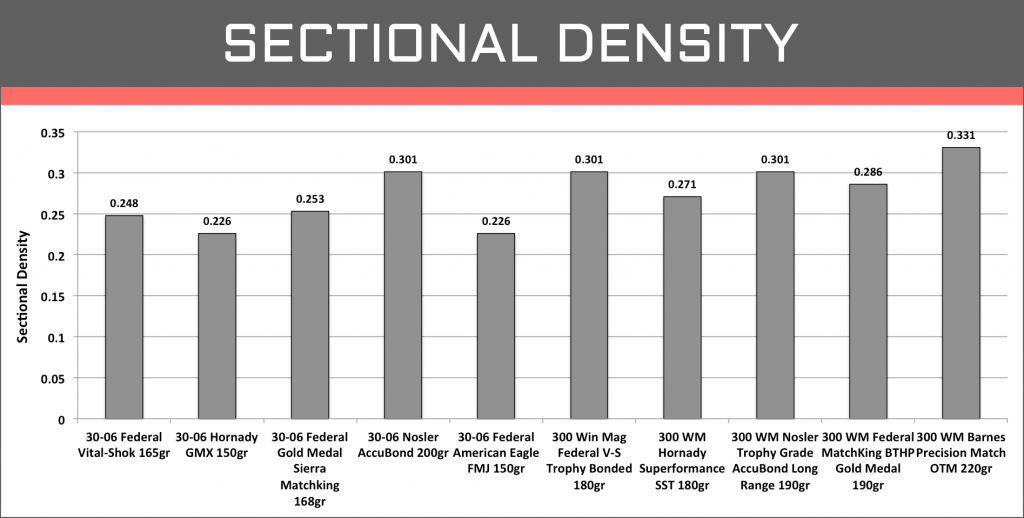


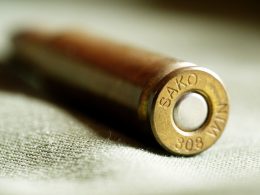
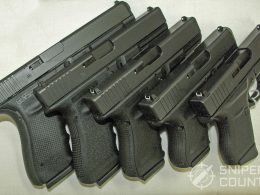

Dang, this really seemed to be thorough, especially since I am debating the chambering of the round I want to get. I’d like to see if Houston has also done a comparison between Tikka and Browning rifles. Now I just need to decide on the mfg of the rifle I am getting.
Great Article, Huston. Definitely one of the most comprehensive comparisons between the the two rounds. I’ve been debating between these two rounds for a while, and this article was very helpful. Thank you!